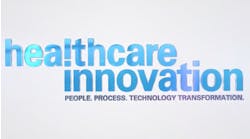We use tools such as Mint.com to get a comprehensive look at the status of financial information that resides in different, unaffiliated accounts. So why can’t we develop technology to achieve a single, holistic view of a patient’s clinical data – without consolidating every platform?
We all recognize that data access at healthcare facilities is impeded by the storage of extremely large amounts of data in proprietary archives. While there are some standards of data exchange and workflow protocols within the healthcare IT industry, it’s often difficult for clinicians to collaborate with various stakeholders to provide the best care. Being able to deliver relevant, timely data is possible if we use intelligent data management and federate multiple storage platforms.
In addition, a recent HIMSS CIO user group outlined several other concerns:
- Unifying disparate systems;
- Standardizing imaging systems;
- Moving all technology onto common infrastructure and common platforms;
- Virtualizing systems and applications; and
- Providing image access from an EMR to authorized users across the entire enterprise.
Faced with these challenges, where do we start? Here are five suggestions:
- Storage needs will continue to grow exponentially, but maintaining silos of data for each department has resulted in expensive solutions that limit data communication and information exchange. Consolidating departmental archives such as radiology, cardiology, dermatology and endoscopy using a vendor-neutral archive is a good first step to unifying disparate systems and creating a standardized data repository.
- What if acquiring a new repository is not an option? An intelligent workflow integration that merges multiple databases and archives may be a good interim solution. Creating an intelligent layer of integration that uses standards-based PIX or MPI to allow information access from current technology is a viable first step to addressing the challenges of legacy systems. This allows current departments to keep their autonomy of workflow without interruption of services, while gaining the benefits of broader access.
- Convenient access to clinical content is also a major requirement. The best option is often to image-enable your EMR by embedding a zero-footprint universal viewer that uses HTML5 technology. Clinicians gain the ability to access multiple exams and reports for each patient quickly and easily from the EMR. This eliminates the time-consuming process of logging into multiple systems to search for this data.
- Have you considered offering access to specialists using telemedicine services? Or expanding your professional services to surrounding communities? A Web-enabled imaging management solution can equip your specialists to provide consultancy capabilities without costly HL7 integration.
- Being part of an HIE or ACO requires complex data sharing. The same intelligent workflow integration can potentially reduce the need to duplicate data in multiple systems while presenting a patient-centric worklist to the end user.
There must be a balance of return on investment, end-user satisfaction and overall quality of care. Establishing a modular clinical data collaboration platform empowers executives to deploy technology to address all these needs.
Just as I can review a report from Mint.com to understand my spending habits, once clinical data is “accounted” for (but not necessarily archived in a single platform) then healthcare providers can begin to leverage Big Data and analytics for quality compliance, or use business intelligence to aid decision making. For example, there are solutions today where radiology reports can include embedded hyperlinks that take clinicians directly to the region of interest or display advanced post-processing data. This not only reduces search time and improves accuracy of the report, these discrete data elements also become minable for research and teaching purposes and can be used to track clinical trends within a population of patients.
Rather than just focusing on vendor-neutral archives, there are building blocks available to help healthcare executives enable a clinical data collaboration platform that identifies, manages and shares data efficiently with any authorized user. Getting the right data to the right user at the right time sounds simplistic. But that’s the goal – and healthcare providers need to start moving in this direction to stay in step with an industry that is dealing with Meaningful Use, healthcare information exchanges and other initiatives that demand these capabilities.



